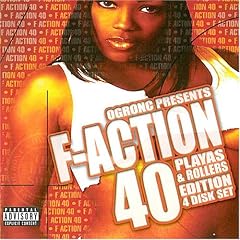
Subrin's video obsesses over another artist and her work, while showing neither the artist's face nor her work. Instead, it spends maybe 20 minutes circling its difficult (because complex, yet temptingly obvious) subject, using a number of strategies which divide the video into an equal number of independent segments. This gesture feels cerebral rather than arbitrary, carefully measured rather than haphazard. I have a feeling it has to do with the length and pace of each segment, which ultimately require intuition much more than rational thought.
I don't remember
The Fancy's exact sequence but I do remember its strategies (or,
movements), for what it's worth. The introductory scanning of the late artist's former belongings, a staid archive made voluptuous by the camera's twists and pans. The camera isn't afraid to re-scan objects at only slightly different angles, like it's cross-referencing this information into a temporal weave. And the short-term memories of the objects build up, encrust themselves in our heads: books, mirrors, a bowl of eels. Then there are still shots, which--coming after those first restless movements--seem as effective as pure photographs. We see them
as photographs, even though they are motion pictures, because they don't
appear to move, because they're rigorously framed. Yet they breathe where photographs suffocate; whereas photographs thrive within sealed borders, the video "stills" have
danger: danger of movement, danger of activity, danger of the unexpected, danger of a cut. And yet they're equally ephemeral, one-of-a-kind documents of a place and time (with bonus
sounds).
Then there are those deadpan recitations and re-enactments of the late artist's photographs, revived for the video camera and video screen. At their best, they isolate and magnify video's extra limbs, its secret weapons: sound (a lone figure, straitjacketed into a "photographic" frame, speaks with no emotion; you hear the words, then you interpret them, then you notice yourself responding to sound, and realize afterwards that these were sounds made by photographs), and movement (anonymous women posing, twitching, and gyrating eerily in total silence--phenomenal that such minimal, isolated movements could be so
shocking). I don't know why film doesn't hold up to basic experiments such as these, but I suppose it makes sense that the more economical and fluid of the two would be the most free.
 Along with texture, rhythm, space and time--your sense of reality becomes viscous, things in the world become curious and uncanny, as if they were all slurred. Like the disorientating game-layers in eXistenZ and the effect created by staring into a computer screen for more hours than into open air. In screw music, there is no sense or implication of the "realest" Real, because literally every sound is distorted and dragged down into unnatural slowness, including the real/live DJ's own interjections (!). This whole world is wrong, thus a totally pure escape--and catharsis, for the open air seems to be charged with electricity when you emerge.
Along with texture, rhythm, space and time--your sense of reality becomes viscous, things in the world become curious and uncanny, as if they were all slurred. Like the disorientating game-layers in eXistenZ and the effect created by staring into a computer screen for more hours than into open air. In screw music, there is no sense or implication of the "realest" Real, because literally every sound is distorted and dragged down into unnatural slowness, including the real/live DJ's own interjections (!). This whole world is wrong, thus a totally pure escape--and catharsis, for the open air seems to be charged with electricity when you emerge.
